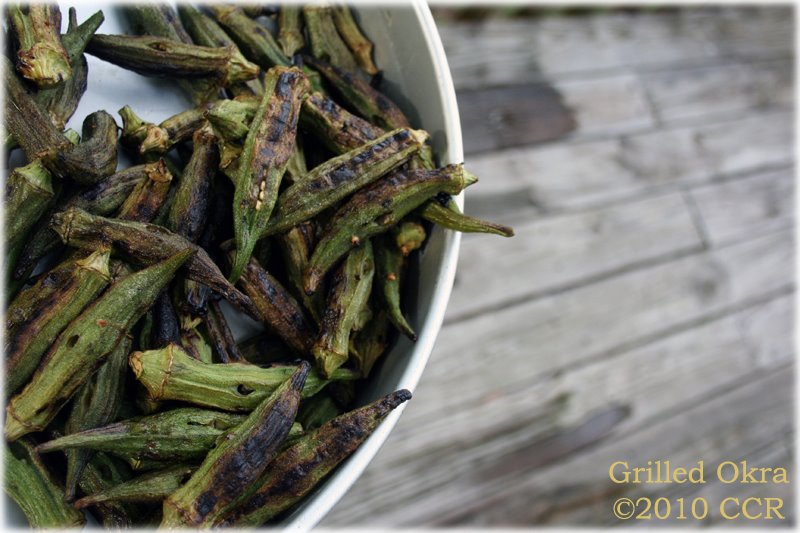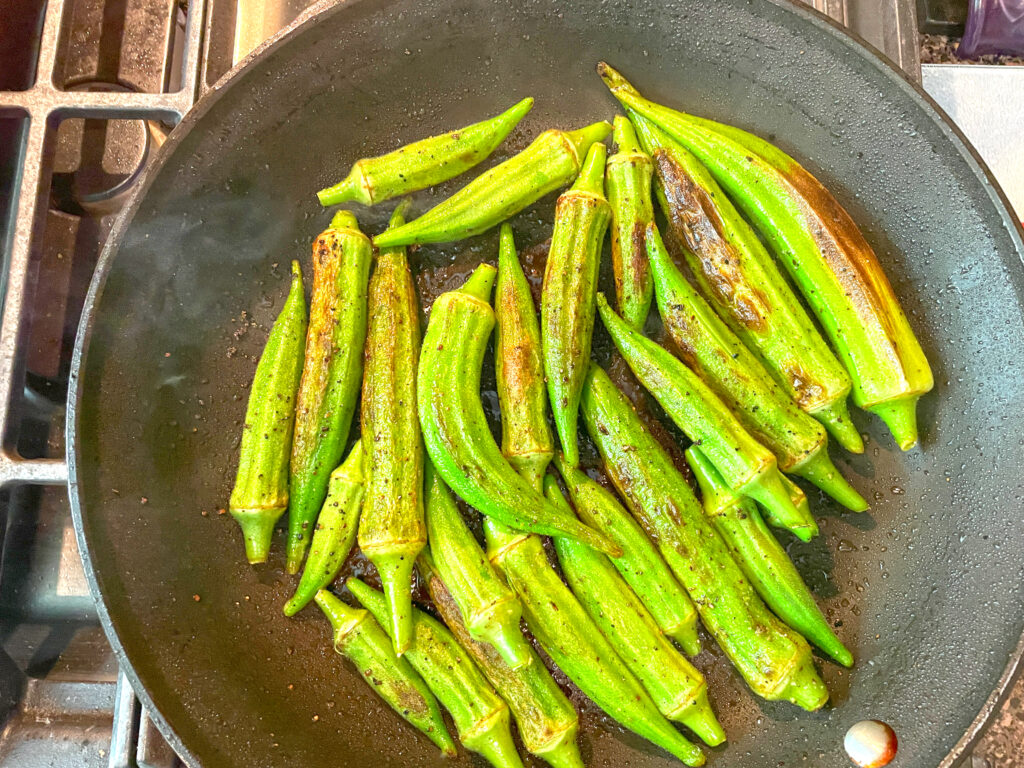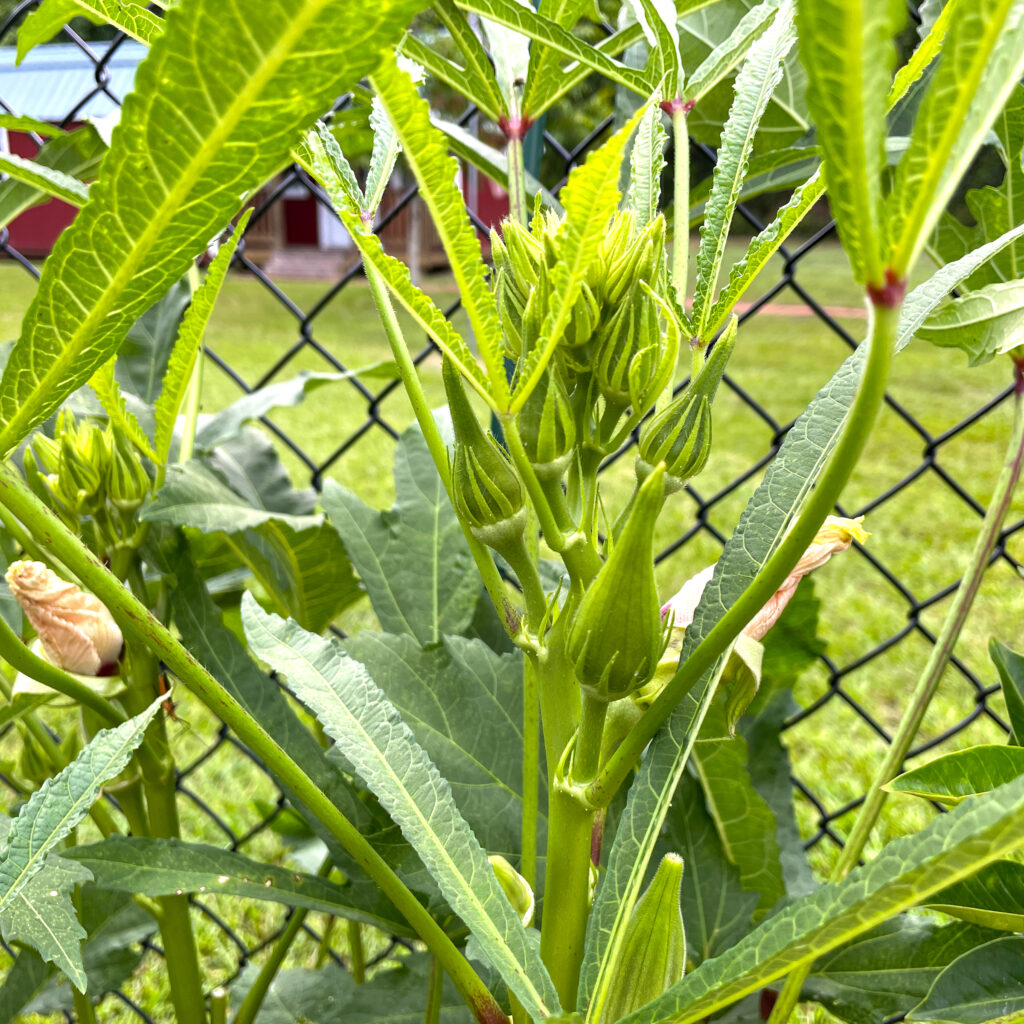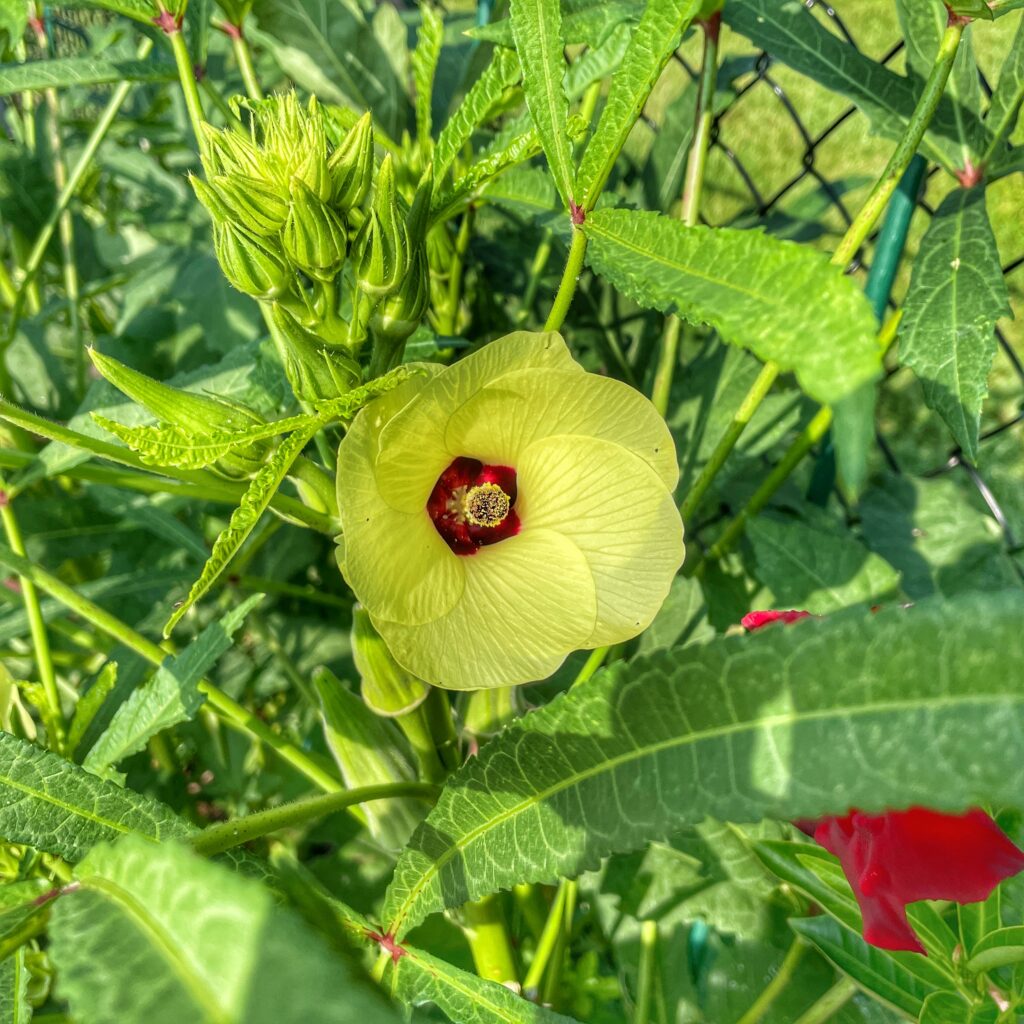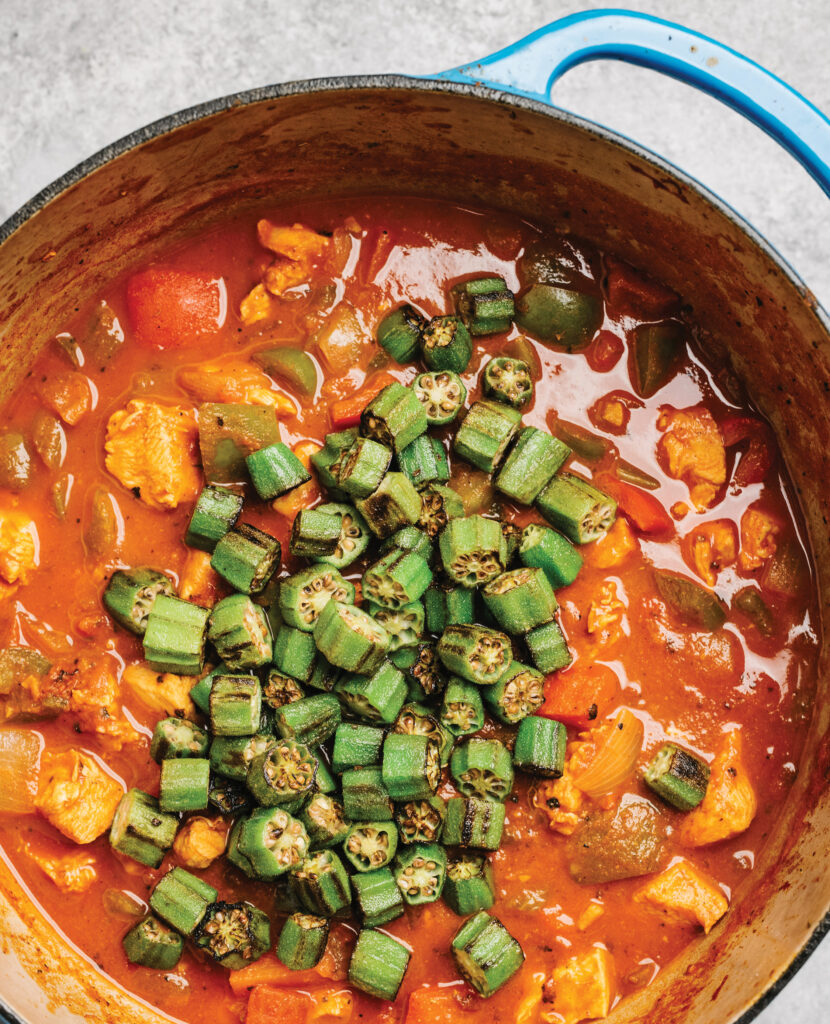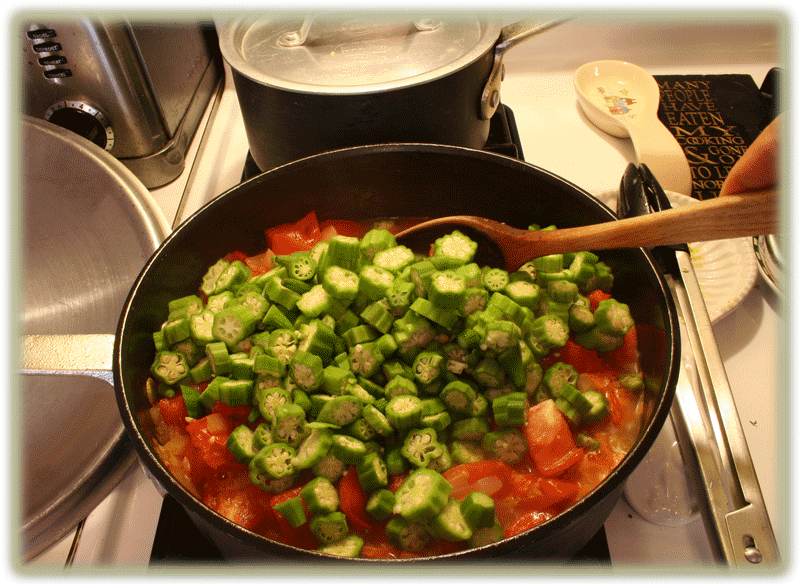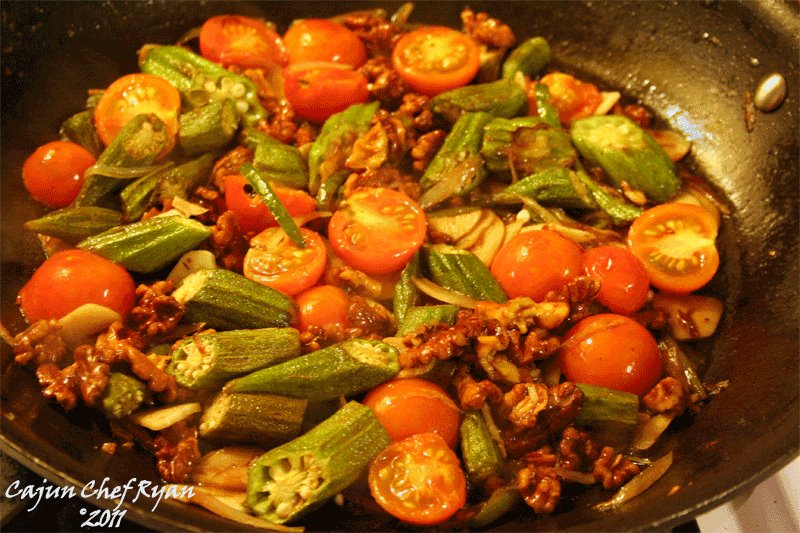Okra, scientifically known as Abelmoschus esculentus, is a vegetable that has captivated taste buds around the world with its unique flavor and texture. This vibrant green pod, often referred to as “lady’s finger,” has a rich culinary history and is celebrated in various cuisines globally. In this blog post, we will delve into the culinary uses, history, and traditions surrounding the beloved okra.
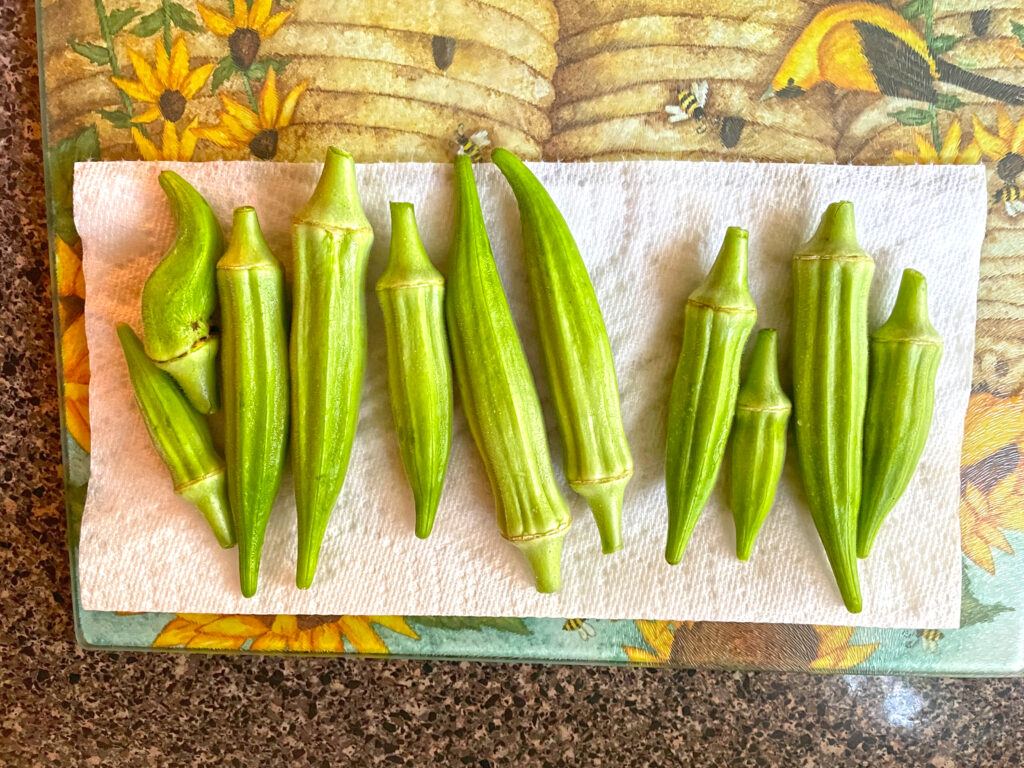
Okra is a versatile ingredient that can be prepared in numerous ways, offering a delightful culinary experience. Here are some popular culinary uses of okra:
Soups and Stews: Okra’s natural thickening properties make it an excellent addition to soups and stews. It releases a viscous substance when cooked, which helps to add body and texture to dishes like gumbo, a classic Creole stew.
Frying and Grilling: When lightly coated in batter or cornmeal, okra can be fried to create crispy and flavorful snacks. Grilled okra, on the other hand, retains its unique taste while gaining a smoky essence.
Pickling: Okra can be pickled in vinegar or brine, resulting in tangy, crunchy spears that make for fantastic appetizers or additions to relish trays.
Stir-fries and Curries: In Asian and Indian cuisines, okra is a staple ingredient in stir-fries and curries. Its mild flavor and tender texture complement the vibrant spices and create a harmonious balance in these dishes.
Historical Significance of Okra: Okra’s history dates back thousands of years and spans across continents. Here are a few highlights of its historical significance:
African Roots: Okra is believed to have originated in Africa, where it has been cultivated for over 2,000 years. It played a significant role in African cuisine and was later introduced to other parts of the world through the transatlantic slave trade.
Global Spread: Okra made its way to the Americas, Europe, and Asia during the 17th century, becoming an integral part of local cuisines. Its versatility, ease of cultivation, and ability to thrive in diverse climates contributed to its rapid spread.
Cultural Traditions and Celebrations: Okra has become deeply rooted in the culinary traditions of various cultures. Here are a few cultural traditions and celebrations associated with okra:
Juneteenth: In the United States, particularly in African American communities, okra is a cherished ingredient during Juneteenth celebrations. The vegetable symbolizes resilience and freedom and is featured prominently in dishes like gumbo and okra-based sides.
Indian Cuisine: Okra, known as “bhindi,” is a beloved vegetable in Indian cuisine. It is used in dishes like bhindi masala, a spicy stir-fry, and sambar, a flavorful lentil stew. In some regions, okra is also dried and ground into a powder to be used as a seasoning.
Middle Eastern Cuisine: Okra is a star ingredient in Middle Eastern dishes such as bamia, a stew made with lamb, tomatoes, and okra. The vegetable’s unique texture and flavor add depth to these flavorful preparations.
Deep South Traditions: Okra holds a special place in the culinary traditions of the Deep South in the United States. This versatile vegetable has been a staple ingredient in Southern cooking for centuries, and its influence can be seen in various classic dishes. Let’s explore the role of okra in the Deep South and its traditional preparations.
Gumbo: Perhaps the most famous dish featuring okra in the Deep South is gumbo. Gumbo is a hearty, flavorful stew that blends various ingredients like meat or seafood, vegetables, and spices. Okra plays a vital role in gumbo, not only for its flavor but also for its ability to thicken the stew. As okra simmers, it releases a viscous substance that contributes to the rich and silky texture of gumbo.
Fried Okra: Fried okra is a beloved Southern comfort food. Sliced into bite-sized pieces, okra is coated in cornmeal or batter, then deep-fried until crispy and golden. This popular side dish showcases okra’s natural flavors and provides a satisfying crunch. Fried okra is often served alongside other Southern favorites like fried chicken or barbecue.
Stewed Okra and Tomatoes: Stewed okra and tomatoes is a classic Southern preparation that combines the freshness of tomatoes with the unique taste and texture of okra. Sliced okra is simmered with tomatoes, onions, and spices until tender. The combination of tangy tomatoes and okra’s earthy flavor creates a delicious side dish or topping for rice or cornbread.
Pickled Okra: Pickling is a preservation method that is deeply ingrained in Southern culinary traditions. Okra is no exception, as it is commonly pickled to create tangy, crunchy snacks. Pickled okra makes for a delightful addition to relish trays, sandwiches, or enjoyed on its own as a zesty snack.
Okra in Southern Vegetables: In Southern cuisine, a medley of vegetables often referred to as “Southern vegetables” or “vegetable plates” frequently includes okra. These plates feature a variety of seasonal vegetables, including okra, cooked to perfection. The okra may be boiled, stewed, or fried, allowing its unique taste to shine alongside other Southern favorites like collard greens, black-eyed peas, and cornbread.
Okra holds a cherished place in the Deep South’s culinary heritage, adding flavor, texture, and character to a range of dishes. Whether it’s contributing its thickening properties to a gumbo, taking center stage as fried okra, or enhancing the flavors of stews and vegetable dishes, okra continues to be an essential ingredient in Southern cooking. Its presence in traditional Southern recipes showcases the cultural significance and love for this versatile vegetable in the Deep South.
Okra’s culinary journey has taken it from its African origins to becoming a cherished ingredient in cuisines worldwide. Its ability to adapt to different cooking techniques and its distinct taste and texture have made it a favorite among food enthusiasts. Whether you enjoy it in soups, stews, stir-fries, or pickled form, okra continues to captivate taste buds and contribute to culinary traditions across cultures. So, the next time you come across this vibrant green pod, embrace its versatility and savor the culinary delights it has to offer.








